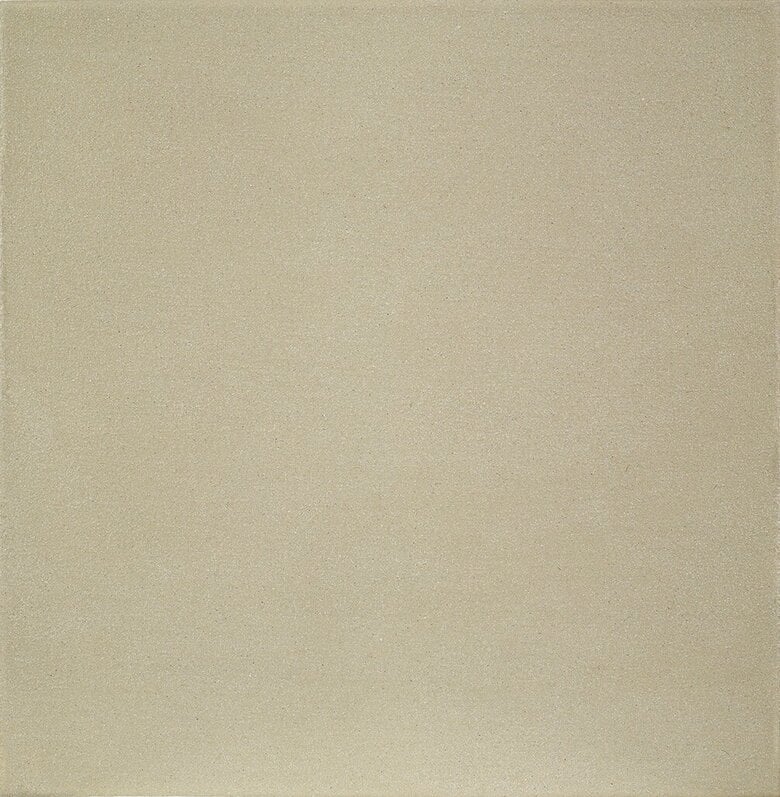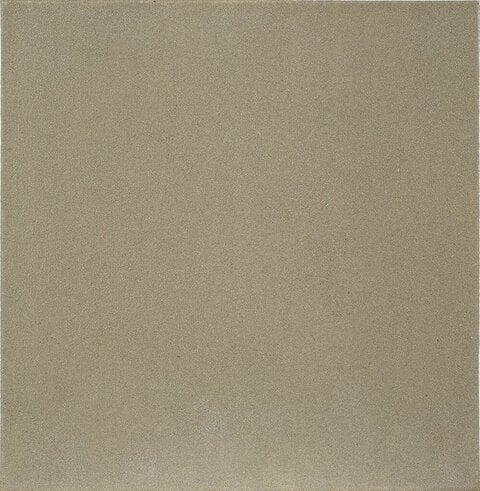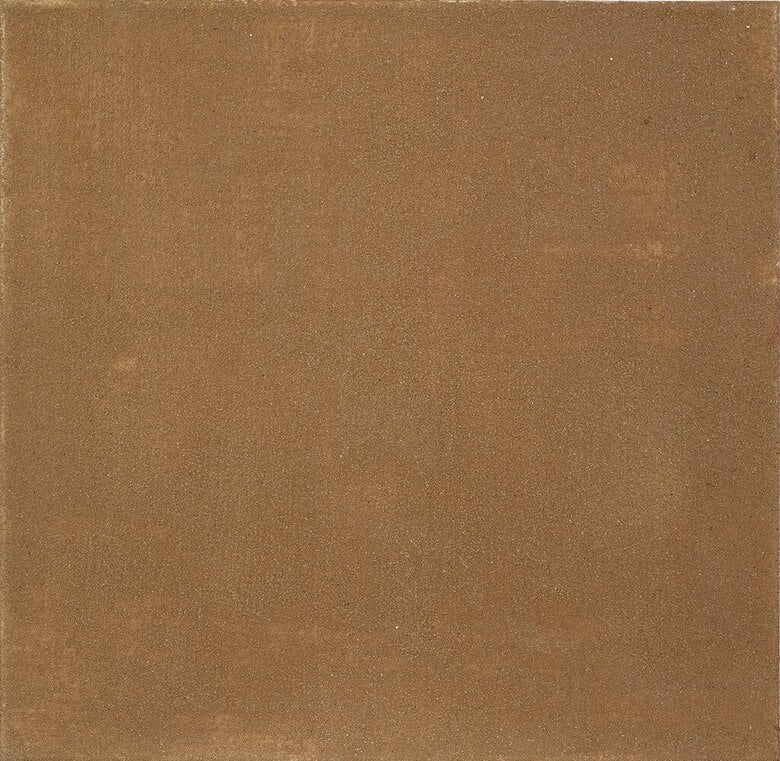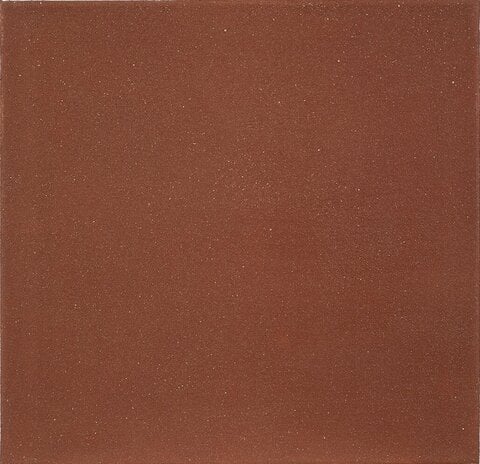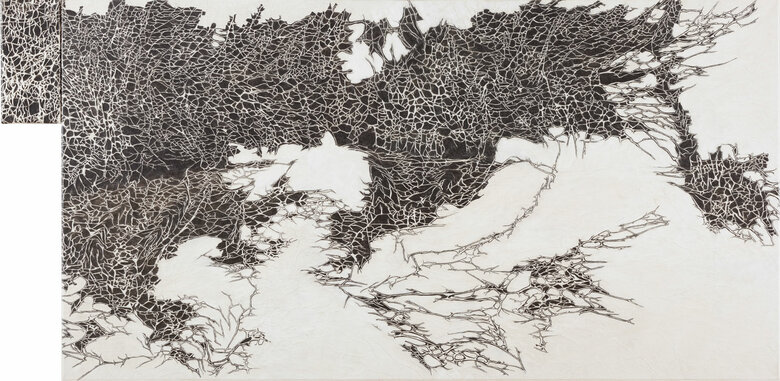Written by Mysa Kafil-Hussain “My work creates a language that people can understand or interpret themselves. I’m very interested to see where the public take the work; how they understand it, in...
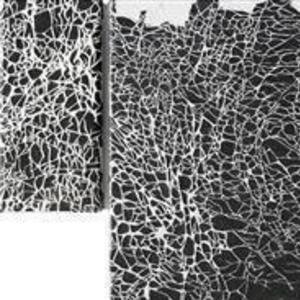

NADIA KAABI-LINKE, Tunisia (1978)
Bio
Written by Mysa Kafil-Hussain
“My work creates a language that people can understand or interpret themselves. I’m very interested to see where the public take the work; how they understand it, in which context they put it. That’s when I discover something new about the work.” Nadia Kaabi-Linke, 2015[1]
Born in Tunis, Tunisia, in 1978, Nadia Kaabi-Linke is an artist who thrives on vigorously questioning and analyzing socio-psychological issues and contemporary political themes. Using a range of materials, she has created immersive installations and striking works, which have enabled her to become one of Tunisia’s most prominent artistic exports. Kaabi-Linke - the product of a Tunisian father and a Ukrainian mother - had a somewhat unsettled and rootless upbringing, growing up surrounded by multiple cultures and environments: “I have a Tunisian, North African Arabic background and also a Soviet, Ukrainian, Russian background. Plus I moved around so much as a child with my parents and as an adult for my studies”.[2] It’s easy to see why Kaabi-Linke would be so drawn to themes of immigration, visas, and diasporic experiences, evident in much of her later work.
Moving with her family to the UAE in the 1990s, Kaabi-Linke felt restricted when she started to come of age, feeling that she as a woman was not able to participate in activities she used to partake in back in Tunisia, especially as her father was the director of a sports club in Tunis, meaning that she had access to a range of sports and dance classes during her childhood. Feeling limited, she began to draw, paint, and write, encouraged by her mother who had studied art in Kiev.[3] After completing high school in Dubai, Kaabi-Linke moved back to Tunis to attend the city’s Academy of Fine Arts, graduating in 1999. Following her degree, she received a scholarship (one of two assigned annually by the Tunisian government) for a PhD at Paris’ prestigious Sorbonne University, completing her doctoral studies in the philosophy of art in 2008.[4] The depth of her doctoral studies intimidated her initially, but she persisted, and she eventually grew to become passionate about research, later influencing much of her practice. While studying, Kaabi-Linke continued to make art, and by the time she completed her thesis, she was already organizing a solo show – her first – in Tunis, marking the beginning of her career as an artist.
Whilst her experience at Tunis’ Academy of Fine Arts taught her the fundamentals of practical arts, especially painting, it was her theoretical research undertaken during her PhD, which brought her to consider making installations. In 2011, Kaabi-Linke won the Abraaj Group Prize for her work ‘Flying Carpet’, creating a visual masterpiece using suspended metal structures, using, in the words of Kaabi-Linke herself, “the idea of the romantic archetype of orientalism in contrast with the harsh realities of every day life of street peddlers in Venice, because they also use carpets on which they sell their goods and they use them in order to fly the coop...so a way to get free from the police, but at the same time this is their prison”.[5] As an artist, her work often looks into social, cultural, political and humanitarian issues, exploring memory and identity and regularly shifting in her use of media (with no particular allegiance to one material or style) but committed to dissecting and excavating the intricacies within contemporary stories. In addition to this, Kaabi-Linke also explores themes of war, conflict and domestic violence, asking numerous questions about the toxic nature of masculinity and its impact on society as whole.[6]
In 2017, Kaabi-Linke created a piece entitled ‘Spick and Span in June and July’, part of an extensive series with variations of graphite drawings on paper and canvas, each linked to months of the year.[7] Relating to both time and space, as well as the limitless possibilities of surface impressions, Kaabi-Linke reflects heavily on her experiences of printmaking, a medium the artist has utilised often, and mark-making. Two distinct themes exude from this work (which is now in the Dalloul Collection): firstly, an insight into skin detail, consistent with Kaabi-Linke’s forensic – almost medical – exploration of the human experience and her curiosity for “anatomising”[8] contemporary society, as well as her consideration of the temporality of traces and artistic mediums. Secondly, one automatically looks at this work and sees elements of map-making, borders and walls. For Kaabi-Linke, walls mean separation and borders create division and thus have a direct impact on our world order, with maps symbolising both the restrictions and the openness of our societies, however she also sees these walls and borders as hidden “skins” which become imprints of cities and the people living within them.[9]
Guided by a desire to use art in an illusionary way, exploring both the visible and the invisible, her work has become a personal investigation of sorts, with a somewhat scientific approach to her practice. As a result of her extensive, widespread research and exploration and her lack of clichéd and fixed creative formulas in relation to her themes or regional influences, she creates universal work which she hopes will “talk to many people”.[10]
Working regularly with her partner, Timo Kaabi-Linke, together they create a range of projects which struggle to be pigeon-holed, classified and deciphered in one uniform way, instead hoping to make unique artworks which speak to each person individually. Kaabi-Linke has had many exhibitions in the last two decades across a plethora of renowned venues, including the Calouste Gulbenkian Foundation in Lisbon, Darat al Funun in Jordan and Centre Pompidou in Paris, as well as participating in events such as the 54th Venice Biennale and the Liverpool Biennale, and in addition to winning the Abraaj Group Prize in 2011, she has also won the Discoveries Prize at Art Basel Hong Kong in 2014. Kaabi-Linke lives and works in Berlin, Germany.
[1] Naima Morelli, “Revealing the invisible: interview with Tunisian-Russian artist Nadia Kaabi-Linke”, Middle East Monitor, September 20, 2015, https://www.middleeastmonitor.com/20150920-revealing-the-invisible-interview-with-tunisian-russian-artist-nadia-kaabi-linke/
[2] Ibid
[3] Ibid
[4] Experimenter: “Nadia Kaabi-Linke – Lost and Found” (Press Release), Experimenter Contemporary Art, India, 2016, https://experimenter.in/images/exhibitions/lostfound/NKLPressRelease.pdf
[5] Abraaj Group: “Abraaj Capital Art Prize 2011 Film”, Abraaj Group Art Prize – Vimeo, 2011, https://vimeo.com/26225856
[6] Jyoti Kalsi, “Bursting the Bubble of Misguided Masculinity”, Gulf News, May 13, 2015, http://gulfnews.com/culture/arts/bursting-the-bubble-of-misguided-masculinity-1.1501238
[7] Experimenter: “Nadia Kaabi-Linke – Lost and Found” (Press Release)
[8] Clelia Coussonnet, “Nadia Kaabi-Linke: Janus-Faced Realities”, Another Africa, August 31, 2016, http://www.anotherafrica.net/art-culture/nadia-kaabi-linke-janus-faced-realities
[9] Morelli, “Revealing the invisible: interview with Tunisian-Russian artist Nadia Kaabi-Linke”
[10] Archana Khare-Ghose, “It’s Difficult to Pigeon-Hole Nadia Kaabi-Linke, And Her Work”, BlouinArtInfo.com, 2016. http://www.blouinartinfo.com/news/story/1364461/its-difficult-to-pigeon-hole-nadia-kaabi-linke-and-her-work
Sources
Abraaj Group: “Abraaj Capital Art Prize 2011 Film”. Abraaj Group Art Prize – Vimeo. 2011. Accessed February 2021. https://vimeo.com/26225856
Coussonnet, Clelia. “Nadia Kaabi-Linke: Janus-Faced Realities”. Another Africa. August 31, 2016. Accessed February 2021. http://www.anotherafrica.net/art-culture/nadia-kaabi-linke-janus-faced-realities
Experimenter: “Nadia Kaabi-Linke – Lost and Found” (Press Release). Experimenter Contemporary Art, India. 2016. Accessed February 2021. https://experimenter.in/images/exhibitions/lostfound/NKLPressRelease.pdf
Kalsi, Jyoti. “Bursting the Bubble of Misguided Masculinity”. Gulf News. May 13, 2015. Accessed February 2021. http://gulfnews.com/culture/arts/bursting-the-bubble-of-misguided-masculinity-1.1501238
Khare-Ghose, Archana. “It’s Difficult to Pigeon-Hole Nadia Kaabi-Linke, And Her Work”. BlouinArtInfo.com. 2016. Accessed December 2017.http://www.blouinartinfo.com/news/story/1364461/its-difficult-to-pigeon-hole-nadia-kaabi-linke-and-her-work
Morelli, Naima. “Revealing the invisible: interview with Tunisian-Russian artist Nadia Kaabi-Linke”. Middle East Monitor. September 20, 2015. Accessed February 2021. https://www.middleeastmonitor.com/20150920-revealing-the-invisible-interview-with-tunisian-russian-artist-nadia-kaabi-linke/
CV
Selected Solo Exhibitions
2025
Nadia Kaabi-Linke: Ascending Cycles, Deak Erika Galeria, Budapest, Hungary
2023
Nadia Kaabi-Linke: Seeing Without Light, Hamburger Bahnhof, Museum of Contemporary Art, Berlin, Germany
Nadia Kaabi Linke: Squeezed in Infinity, National Art Museum of Ukraine, Kyiv, Ukraine
Nadia Kaabi-Linke (MO_Schaufenster #34), Museum Ostwall, Dortmund, Germany
2021
Реактивний струм / Idle Current (working title), National Art Museum of Ukraine, Kyiv, Ukraine
2020
A Matter of Resilience, Darat al Funun, Amman, Jordan
2019
Ремонт, Izolatsia, Kyiv, Ukraine
2018
Impossible Ordinary, Lawrie Shabibi Gallery, Dubai, United Arab Emirates
2017
Versiegelte Zeit / Sealed Time, Kunstmuseum Bonn, Germany
After-Images of Residue, Experimenter, Frieze Art Fair, New York, New York, United States of America
2016
Lost and Found, Experimenter, Kolkata, India
2015
Walk the Line,
Dallas Contemporary, Dallas, Texas, United States of America
Fahrenheit 311: Seven Legends of Machismo, Lawrie Shabibi, Dubai, United Arab Emirates
2014
The Future Rewound and the Cabinet of Souls, The Mosaic Rooms, London, United Kingdom
In Confinement My Desolate Mind Desires, Experimenter, Art Basel, Hong Kong, China
Meinstein, Alfred-Scholz-Square, Neukoelln, Berlin, Germany
Stranded – Preso por fios, Centro de Arte Moderna, Fundacao Calouste Gulbenkian, Lisbon, Portugal
2013
No One harms Me…, Experimenter, Kolkata, India
2012
Black is the New White, Lawrie Shabibi , Dubai, United Arab Emirates
2010
Tatort/ Crime Scene, Christian Hosp Galerie, Berlin, Germany
2009
Archives des banalités tunisoises, Gallery El Marsa, Tunis, Tunisia
Selected Group Exhibitions
2025
From Dawn Till Dusk the Shadow in Contemporary Art, Kunstmuseum Bonn, Bonn, Germany
Homesick for New Things, Kunstmuseum Bonn, Bonn, Germany
2024
Sous La Terre, Les Dragons, Frac à Carquefou, Carquefou, France
Seeing Is Believing: The Art and Influence of Gérôme, Mathaf, Arab Museum of Modern Art, Doha, Qatar
Spuiten en stikken - Zomertentoonstelling 2024, Centraal Museum, Utrecht, Netherlands
2023
The Mashrabiya Project, Museum for Art in Wood Old City, Philadelphia, Pennsylvania, USA
In Its Own Shadow, ARTER Beyoglu, Istanbul, Turkey
2022
The Sun Rises in the West and Sets in the East, Tufts University Art Gallery, Medford, Massachusetts, USA
Forming Communities: Berliner Wege, KINDL – Centre for Contemporary Art, Berlin, Germany
2021
Une aire de famille,
Musée d’art et d’histoire Paul Éluard, St. Dénis, France
TraumA. 3rd Bruges Triennial, Bruges, Belgium
Ithra Museum, Damman, Saudi Arabia
Fresh Earth, Aicon Gallery, Greenwich Village, New York, USA
Under Construction, Lawrie Shabibi, Dubai, United Arab Emirates
Under Construction Part II, Lawrie Shabibi, Dubai, United Arab Emirates
Cities Under Quarantine: The Mailbox Project, Villa Romana, Florence, Italy
Darat al Funun Re-Opening, Darat al Funun, Amman, Jorda
2020
I Put a Spell On You: On Artist Collaborations, SCAD – Museum of Art, Savannah, Georgia
The Lighthouse, Villa Empain – Boghossian Foundation, Brussels, Belgium
Gabes Cinema Fen, Württ. Kunstverein, Stuttgart, Germany
Global(e) Resistance, Centre Pompidou, Paris, France
The Invented History, KINDL – Centre for Contemporary Art, Berlin, Germany
A Bottomless Silence - Moda 2020, Wallach Art Gallery, Columbia University, New York, United States of America (Online Edition)
El Kazma – Gabes Cinema Fen, Gabes, Tunisia (Online Edition)
Unhomed, Uppsala Art Museum, Uppsala, Sweden
2019
Соло / Solo, Mayakovsky Theater, 48 hours Novosibirsk, Russia
Mare nostrum : identités méditerranéennes, Espace Monte Cristo, Pari, France
Durch Mauern gehen / Walking Through Walls, Martin Gropius Bau, Berlin, Germany
Clapping With Stones: Arts and Acts of Resistance, Rubin Museum of Art, New York, United States of America
Gedenkort Stadthaus, Stadthöfe, Hamburg, Germany
Sensation of Space, The Warehouse, Dallas, Texas, United States of America
MATERIALIZE, Lawrie Shabibi, Dubai, United Arab Emirates
What Remains Is What the Poets Found, PS 120, Berlin, Germany
Speaking Power to (Post) Truth, Jane Lombard Gallery, New York, United States of America
2018
How To See [What Isn't There], Langen Foundation, Neuss, Germany
Body Ego, Dallas Museum of Art, Texas, United States of America
Scripted Reality, 10 Hanover Street, London, United Kingdom
Sahara: What is written will remain, Galleria Delle Prigioni, Treviso, Italy
LB01 – Lahore Biennial, Lahore, Pakistan
2017
Witness, Karachi Biennial, Karachi, Pakistan
Between two rounds of fire, the exile of the sea: Arab Modern and Contemporary Works from the Barjeel Art Foundation, American University Museum at the Katzen Arts Center, Washington DC, United States of America
2016
(RE) Birth, Art Abu Dhabi Gateway Program, Manarat Al Saadiyat, Abu Dhabi, United Arab Emirates
Borders of Visibility — 25th Slavonian Biennial, Museum of Fine Arts, Osijek, Croatia
Social Calligraphies, National Gallery of Art, Warsaw, Poland
Songlines for a New Atlas, Kalmar Museum, Kalmar, Sweden
But a Storm is Blowing from Paradise, UBS MAP Global Art Initiative, Solomon R. Guggenheim Museum, New York, United States of America
Line and Body: The Minimal Impulse in South Asia and the Middle East", Aicon Gallery, New York, United States of America
But Still Tomorrow Builds into My Face, Lawrie Shabibi, Dubai, United Arab Emirates
Magic and Power– Of Magic Carpets and Drones, Marta Herford Museum, Herford, Germany
2015
Invisible Manoeuvres – Reserves of Interpretation and Regions of Definition, Galerie Wedding, Berlin, Germany
What is Home?, Pump House Gallery, London, United Kingdom
The Monsoon Show, ISA Gallery, Mumbai, India
All the World’s a Mosque, Bardo Museum, Carthage, Tunisia
2014
Wir sind alle Berliner: 1884-2014, Savvy Contemporary, Berlin, Germany
Entre nosotros / Between Us, Video Art from the Middle East and North Africa in a Global World, Etopia Center for Art and Technology, Zaragoza, Spain
Memory, Place, Desire: Contemporary Art of the Maghreb and the Maghrebi Diaspora, Cantor Fitzgerald Gallery, Haverford College, Haverford, Philadelphia, United States of America
Sculpture du Sud #4, Villa Datris, L’Isle-sur-La-Sorgue, France
Ici l’Afrique/ Here Africa, Art for the World, Chateau de Penthes, Geneva, Switzerland
Arab Contemporary, Lousiana Museum of Modern Art, Humlebaek, Denmark
Conjunction, Greenhouse, Berlin, Germany
2013
Lieux de Mémoire,
Summarria Lunn Gallery, London, United Kingdom
Women Commentators, Center for Contemporary Art Ujazdowski Castle, Warsaw, Poland
Dysraphic City, Projektraum Kunstraum Kreuzberg/Bethanien, Berlin, Germany
Nouvelles vagues – Looking for video, Claudine Papillon Gallery, Paris, France
Traces, Lawrie Shabibi, Dubai, United Arab Emirates
Abstract Generation: Now in Print, The Museum of Modern Art, New York, United States of America
Visual Arts Festival Damascus, DEPO, Istanbul, Turkey
Conflicted Memory, Alan Cristea Gallery, London, United Kingdom
Tireless Refrain, Nam June Paik Art Center, Gyeonggi-do, Seoul, South Korea
25 Years of Arab Creativity, Bahrain National Museum, Manama, Bahrain
2012
Kochi-Muziris Bienniale 2012, Kerala, India
Drifting, Haus der Kulturen der Welt, Berlin, Germany
25 ans de créativité arabe, Institut du Monde Arabe, Paris, France
201111111s, LEAP-Lab for Emerging Arts and Performance, Berlin, Germany
The Unexpected Guest, Liverpool Biennial 2012, Liverpool, UK
Chkoun Ahna — On the Track of History, Carthage Contemporary, National Museum of Carthage, Tunisia
Languages of Revolution, Kleine Humboldt Galerie, Berlin, Germany
Social States: Baptiste Coelho and Nadia Kaabi-Linke, Pump House Gallery, London, United Kingdom
Lines of Control – Partitions as a Productive Space, Herbert F Johnson Museum, Cornell University, Ithaca, New York, United States of America
2011
El arte contemporáneo en el Magreb: dos orillas, Circulo de Bellas Artes Madrid, Madrid, Spain
The Future of a Promise, Collateral event during the 54th Venice Biennale, Venice, Italy
Based in Berlin, KW Institute for Contemporary Art, Berlin, Germany
Different Abstractions. Green Cardamom Gallery, London, United Kingdom
Drawn from Life, Abbot Hall Art Gallery, Cumbria, United Kingdom
2010
One Year in Berlin,
Christian Hosp Gallery, Berlin, Germany
Split, Darb 1718 Contemporary, Cairo, Egypt
2009
Aftermath, 25th Alexandria Biennal, Alexandria, Egypt
Drawn from Life – Drawing Form, Green Cardamom Gallery, London, United Kingdom
Provisions for the Future, Sharjah Biennial 9, Sharjah, United Arab Emirates
Tunaction, Gallery Itinerance, Paris, France
2008
Urban Traces,
Wilmer Cutler Pickering Hale and Dorr LLP, Berlin, Germany
Without Borders: Hispano/Maghreb Artistic Convergences, 30th Pontevedra Art Biennial, Pontevedra, Spain
Art Connexions: Arab Contemporary Artists, Gallery El Marsa, Tunis, Tunisia
Awards
2020
Darat al Funun - The Khalid Shoman Foundation, Amman, Jordan
2019
AFAC - Film Grant, Beirut, Lebanon
2014
Discoveries Prize, Art Basel Hong Kong
2011
Abraaj Group Art Prize, Dubai, United Arab Emirates
2010
First prize "UmbauStadt", Art and Urban Architecture Competition, Berlin, Germany
Al Mawred Al Thaqafy Grant, Cairo, Egypt
2009
Jury Prize at the 25th Alexandria Biennal for Mediterranean Countries, Alexandria, Egypt
2008
Production Grant from Centro Culturale Teresa Orsola Bussa de Rossi, Turin, Italy
Collections
Abraaj Group Art Collection, Dubai, United Arab Emirates
Art Jameel Collection, Dubai, United Arab Emirates
ARTER, Vehbi Koç Foundation Contemporary Art Collection, Istanbul, Turkey
Barjeel Art Foundation, Sharjah, United Arab Emirates
The Burger Collection, Hong Kong
Centre Pompidou, Paris, France
Dallas Museum of Art, Dallas, United States of America
Fondation François Schneider, Wattwiler, France
Fondation Villa Datris pour la Sculpture Contemporaine, L’Isle-sur-La-Sorgue, France
JPMorgan Chase Art Collection, New York, United States of America
Kamel Lazaar Foundation, Geneva, Switzerland
The Khalid Shoman Collection, Amman, Jordan
M+ Museum, Hong Kong
Ministère de la Culture et de la Sauvegarde du Patrimoine, Tunis, Tunisia
The Museum of Modern Art, New York, United States of America
Ramzi and Saeda Dalloul Art Foundation, Beirut, Lebanon
Samdani Art Foundation, Dhaka, Bangladesh
Sharjah Art Foundation, Sharjah, United Arab Emirates
Solomon R. Guggenheim, New York, United States of America
Press
“Nadia Kaabi-Linke. Seeing Without Light” at Hamburger Bahnhof.pdf
Nadia Kaabi-Linke wins the 4th edition of the Ithra Art Prize - Announcements - e-flux.pdf
Nadia Kaabi-Linke_ Squeezed in Infinity - Announcements - e-flux.pdf
Berlin-based Tunisian artist wins Saudi Arabia’s 4th Ithra Art Prize _ Arab News.pdf
Tunisian-Ukrainian artist wins prestigious Ithra Prize at Diriyah Biennale.pdf
Artist Nadia Kaabi-Linke on recovering Ukrainian stories suppressed by Russia.pdf
Nadia Kaabi-Linke Is Announced The Winner Of The Fourth Edition Of Ithra Art Prize _ Harper's Bazaar Arabia.pdf
NADIA KAABI-LINKE Artwork
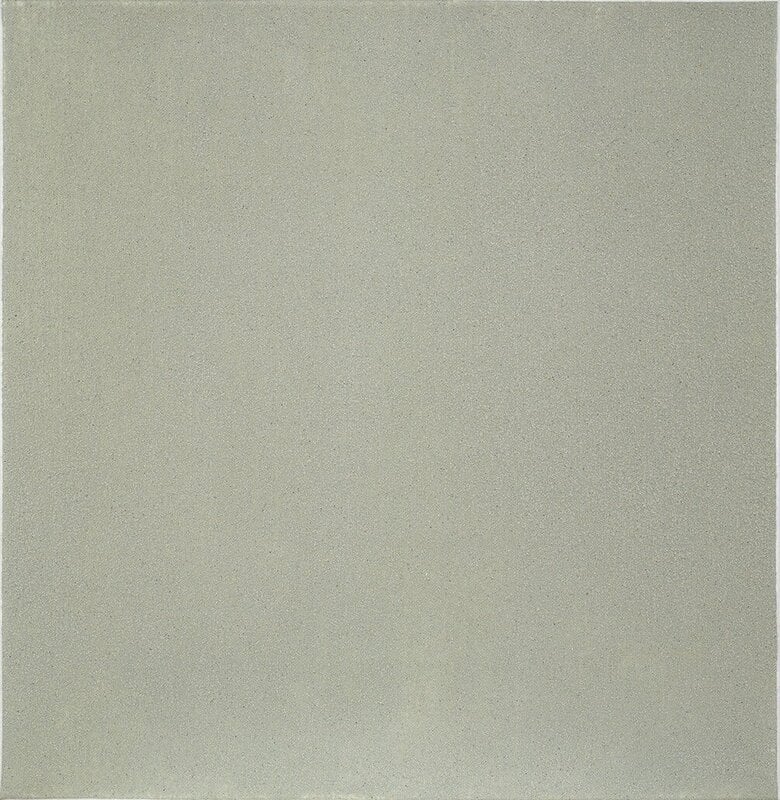

P.D. Mehta's Farm House, Kochrab, Ahmedabad (Colour of Times - Series)
NADIA KAABI-LINKE, Tunisia, 2019
50 x 51.5 cm
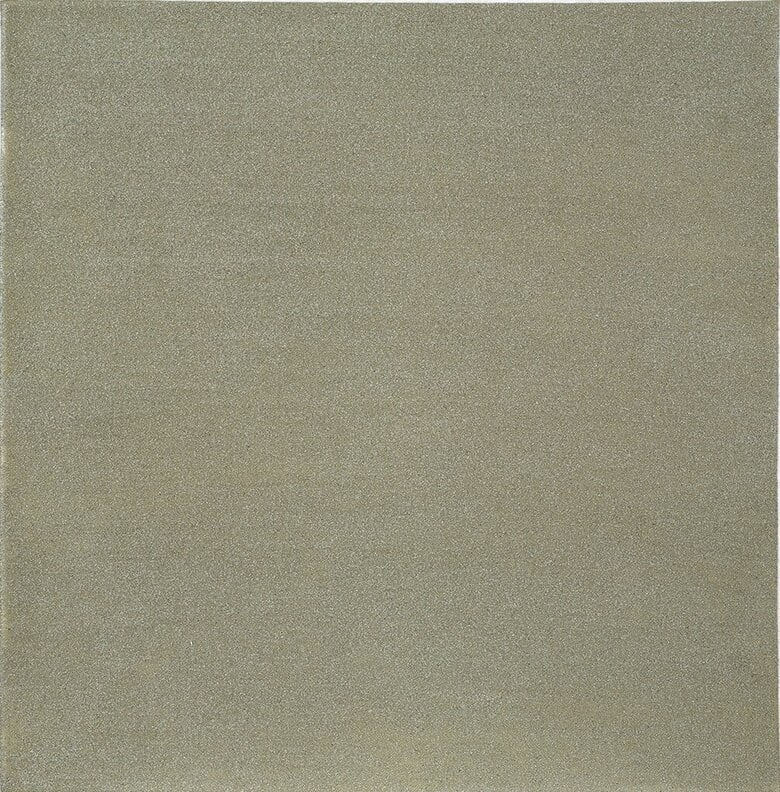

P.D. Mehta's Haveli, Khadija, Ahmedabad (Colour of Times - Series)
NADIA KAABI-LINKE, Tunisia, 2019
50 x 51.5 cm
Become a Member
Join us in our endless discovery of modern and contemporary Arab art
Become a Member
Get updates from DAF
Follow Artists
Save your favourite Artworks
Share your perspectives on Artworks
Be part of our community
It's Free!
We value your privacy
TermsCookiesPrivacy Policies
Become a Member
Get updates from DAF
Follow Artists
Save your favourite Artworks
Share your perspectives on Artworks
Be part of our community
It's Free!
We value your privacy
TermsCookiesPrivacy Policies
Become a Member
Get updates from DAF
Follow Artists
Save your favourite Artworks
Share your perspectives on Artworks
Be part of our community
It's Free!
We value your privacy
TermsCookiesPrivacy Policies
Welcome to the Dalloul Art Foundation
Thank you for joining our community
If you have entered your email to become a member of the Dalloul Art Foundation, please click the button below to confirm your email and agree to our Terms, Cookie & Privacy policies.
We value your privacy, see how
Become a Member
Get updates from DAF
Follow Artists
Save your favourite Artworks
Share your perspectives on Artworks
Be part of our community
It's Free!
We value your privacy
TermsCookiesPrivacy Policies

